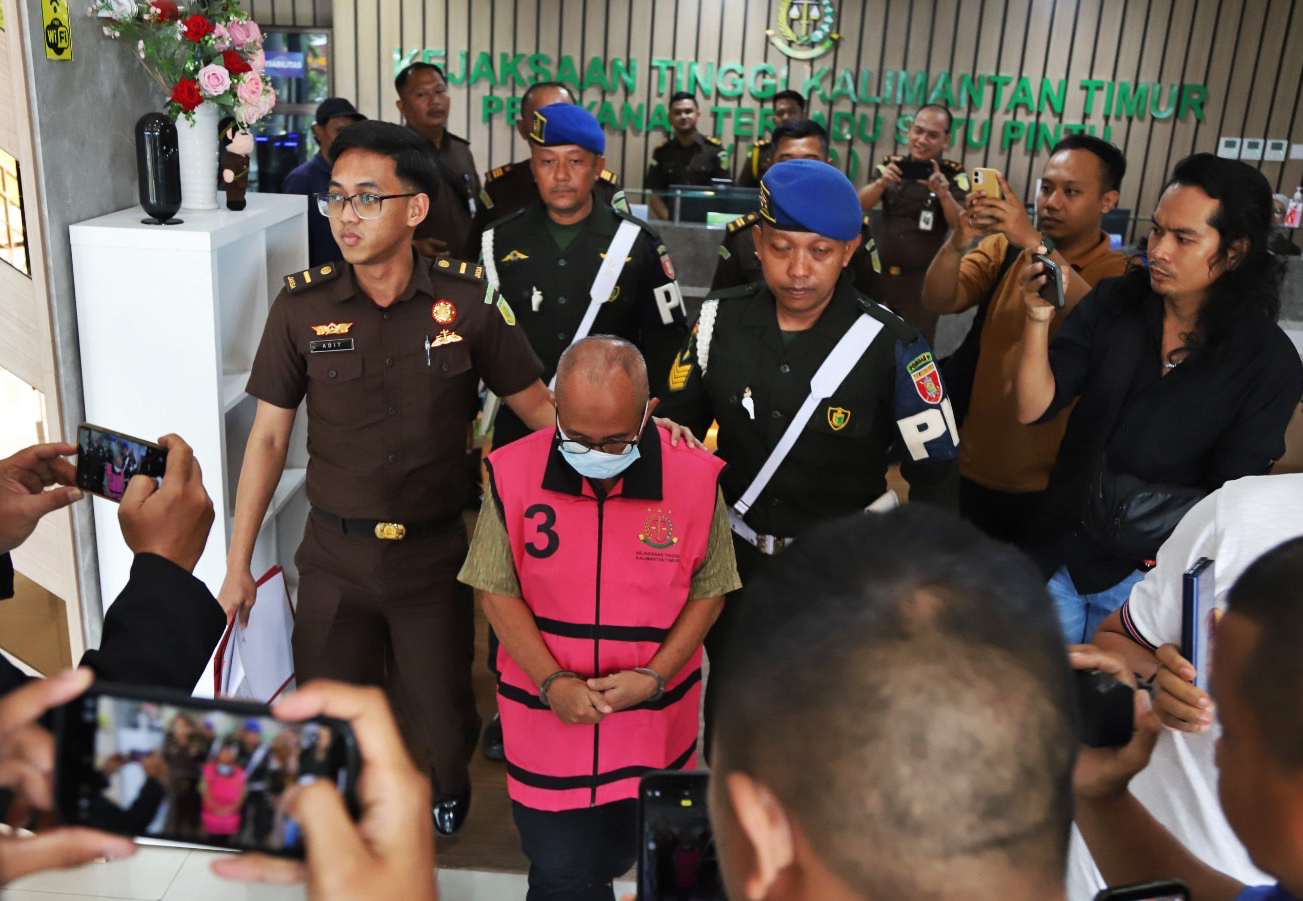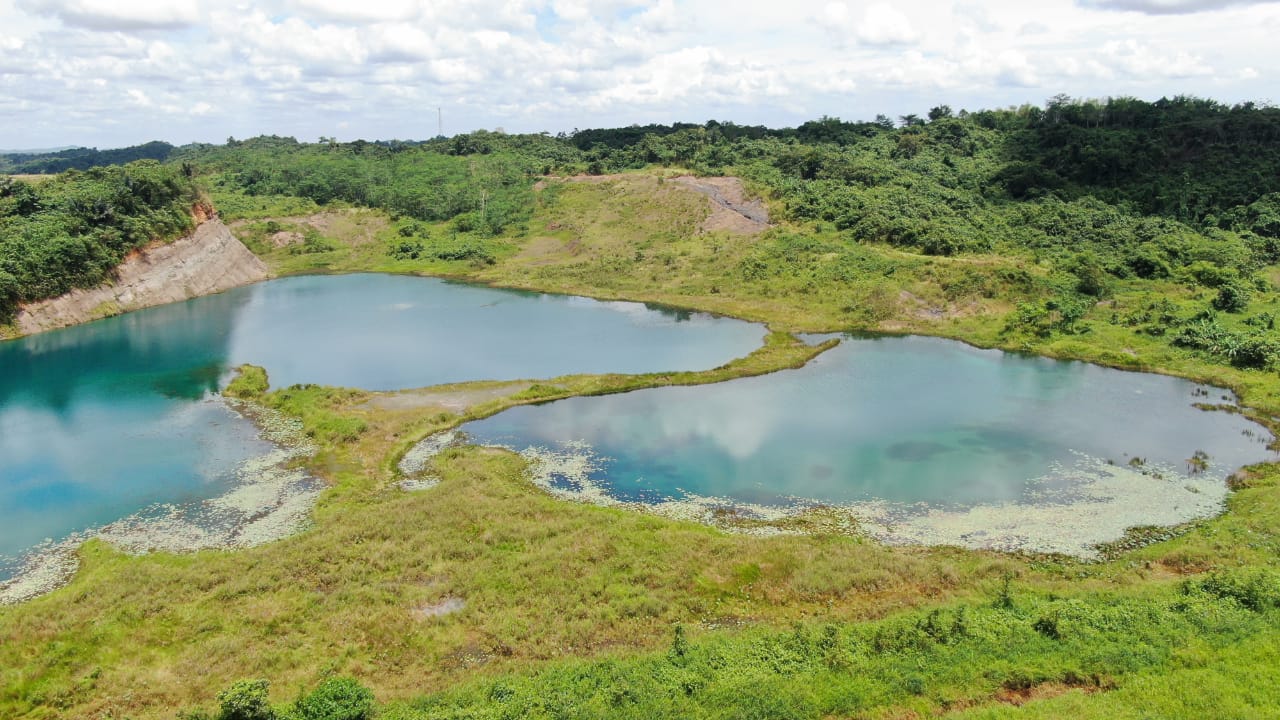- The former head of the East Kalimantan provincial mining agency is facing corruption charges, after he allegedly disbursed a guarantee payment used for environmental restoration to a company in East Kalimantan province.
- Muhammad Muhdar, an environmental lawyer at Mulawarman University in Samarinda, the provincial capital, told Mongabay that gaps in land rehabilitation of closed mining pits are so extensive that there’s potential for further unlawful activity to come to light.
- Data from the Mining Advocacy Network, a civil society organization known as Jatam, showed more than 1,700 former coal mine sites in East Kalimantan province, and that around 39 people had died in the excavations, most of them children.
SAMARINDA, Indonesia — The prosecution of a former head of mining in Indonesia’s East Kalimantan province could reveal wider misuse of environmental restoration funds across the country’s coal heartland, a prominent environmental lawyer said in June.
“I see that there’s the potential for there to be others, so I recommend that law enforcement officers audit all these mining pits,” said Muhammad Muhdar, an environmental lawyer at Mulawarman University in Samarinda, the provincial capital.
Last month, the East Kalimantan prosecutor’s office announced it would charge Amrullah, the head of the provincial mining agency, in connection with an alleged decade-old conspiracy pertaining to coal miner CV Arjuna.
Located in the east of Borneo Island, East Kalimantan accounts for more coal production than any other province in Indonesia, the world’s largest exporter of thermal coal. Coal production across Indonesia increased to 831 million metric tons in 2024, an all-time high.
Amrullah had served as head of the energy and minerals department in East Kalimantan from 2010-2018.
Arjuna operated a 1,452-hectare (3,588-acre) coal mine in Makroman village, within the Samarinda city limits, on the east coast of Borneo. The company was required by law to conduct environmental reclamation work to seal the mine on reaching the end of its operating permit.
“To my knowledge, this is probably the first case where someone has been charged in relation to corruption of reclamation funds in East Kalimantan,” Muhdar said. “So it would be good for us to jointly monitor the process in order to assist our law enforcement officers.”
Guaranteed returns
Arjuna was required by law to draft a reclamation plan and deposit guarantees, known locally as jamrek, to fund the environmental restoration work, said Toni Yuswanto at East Kalimantan’s Attorney General’s Office.
However, prosecutors allege that Amrullah abused his office by disbursing funds held by the government to the company prior to receiving a validated report of environmental rehabilitation at the Makroman site.
The company simply failed to clean up after itself, the state alleges, leaving the excavation unchanged and the pit exposed.
“In 2016, the East Kalimantan [energy and mining] department returned the reclamation guarantee in the form of a deposit to Arjuna without technical considerations, implementation reports or a disbursement approval from the authorities,” Toni said.

Prosecutors allege the disbursement caused direct losses to the province of 13.2 billion rupiah ($813,000) and a further 2.5 billion rupiah ($154,000) owing to outstanding deposits that were not paid. The investigators have estimated the cost of the environmental damage due to the lack of rehabilitation at 58 billion rupiah ($3.6 million).
“The investigation process is ongoing to reveal roles of other parties, and to account for losses incurred by the public,” Toni said.
Abandoned mines are dangerous locations that remain a prominent cause of death among children in East Kalimantan and other coal-producing regions. Indonesia’s National Commission on Human Rights (Komnas HAM) has found that mining pits left by 17 companies in East Kalimantan may have been responsible for 27 deaths between 2011 and 2016, most of them children.
A 2017 investigation by Mongabay Indonesia found numerous instances of excavations in East Kalimantan within 500 meters (0.3 miles) of residential areas, the limit required by law.
In 2021, the worst floods in 50 years caused at least 23 deaths and displaced more than 100,000 people in neighboring South Kalimantan province. The government conceded that deforestation, typically for coal mining and plantations, had affected drainage capacity, and that at least 20 mining companies would be pressed to meet their land rehabilitation responsibilities.
“We will immediately ask for these reclamation responsibilities to be carried out until completion,” a senior environment ministry official said in the wake of the 2021 floods.
Money pit
Windy Pranata, advocacy lead at the East Kalimantan office of the Mining Advocacy Network, an Indonesian NGO known as Jatam, said Arjuna should have been familiar to officials in the province.
The company had been operating in Makroman for only one year when a flood in 2008 polluted rice fields and fishing ponds operated by farmers in three neighborhoods, Jatam noted.
“Since then people’s economy began to decline drastically, some have become desperate because of the damage to their rice fields and have sold them,” Windy said.
Community relations broke down in January 2011 after a mudslide buried rice fields around 500 m from the site. That event led local residents to campaign for the closure of the mine.
Ground checks and image analysis by Jatam showed Arjuna may have left eight mining pits unsealed in Makroman.
Sealing expired or abandoned coal mines is crucial to prevent access to dangerous mine shafts, while containing risks from toxic gas and other environmental hazards like the creation of sulfuric acid in groundwater via iron sulfide contamination.

In 2021, a 25-year-old man was found dead at the Makroman site, the civil society group said.
“The victim died after swimming in a former mining pool which until today has been left vacant,” Windy said.
The Makroman fatality was the 39th death recorded in East Kalimantan due to expired mines. The data showed that the city of Samarinda accounted for 27 fatalities, the constituency with the highest number of deaths. The next most-dangerous regional jurisdiction was Kutai Kartanegara district, which recorded 15 deaths. Two people died in Paser district, and one each in Berau, North Penajam Paser and West Kutai districts.
Satellite imagery analyzed by Jatam showed there may be 3,092 abandoned mining pits in Indonesia, with 1,735 in East Kalimantan province.
“That means more than half of the former mining pits are in East Kalimantan,” Windy said.
Muhdar, the Mulawarman University legal scholar, said investigators should calculate and publish estimates of environmental damages, in addition to direct financial losses incurred by the local governments. He pointed to the investigation of a tin-mining scandal on Bangka Island, in which authorities alleged environmental damages likely reached 271 trillion rupiah ($16.9 billion).
Muhdar said he once visited Makroman and saw widespread environmental damage owing to the Arjuna coal mine.
“The state doesn’t seem to be fully responsible for upholding the safety of people,” he said, adding that a full audit should now take place.
In Mongabay’s 2017 report, the East Kalimantan government said that only 96 of 856 the commercial permit holders in the province had made the deposits and bank guarantees required by law for post-mining rehabilitation.
Indonesia’s national auditor, the BPK, had found a year prior that many companies had submitted only photocopies of bank guarantee certificates, or that certificates held on file had expired.
At the time, Amrullah, then the head of the East Kalimantan mining office, told Mongabay that many companies were delinquent and that his office was reviewing company compliance “one by one.”
Last month, Amrullah descended the prosecutor’s office head bowed, wearing the magenta vest worn by detainees in East Kalimantan province.
Banner image: Rukka shows the location of a former coal mine pit that flows into the Nangka River, which is now polluted. Image by Tommy Apriando/Mongabay Indonesia.
This story was first published here in Indonesian on June 7, 2025.
Flawed energy road map may block Indonesia’s coal exit, critics warn
